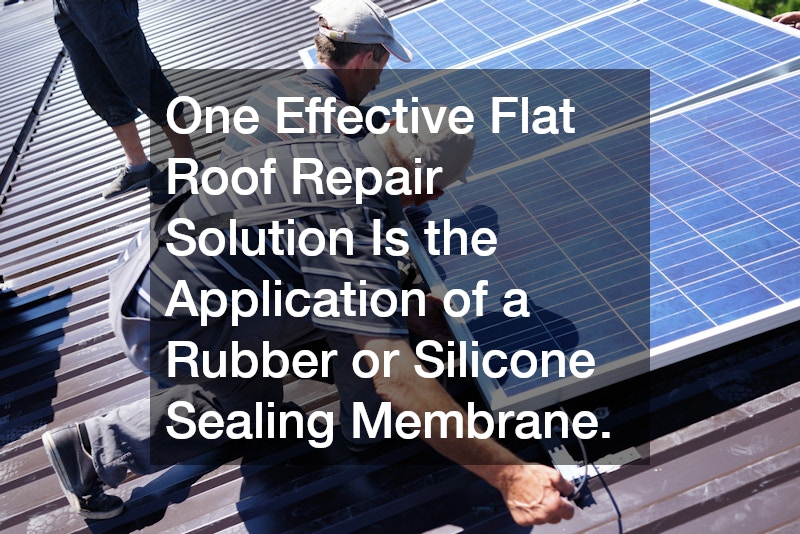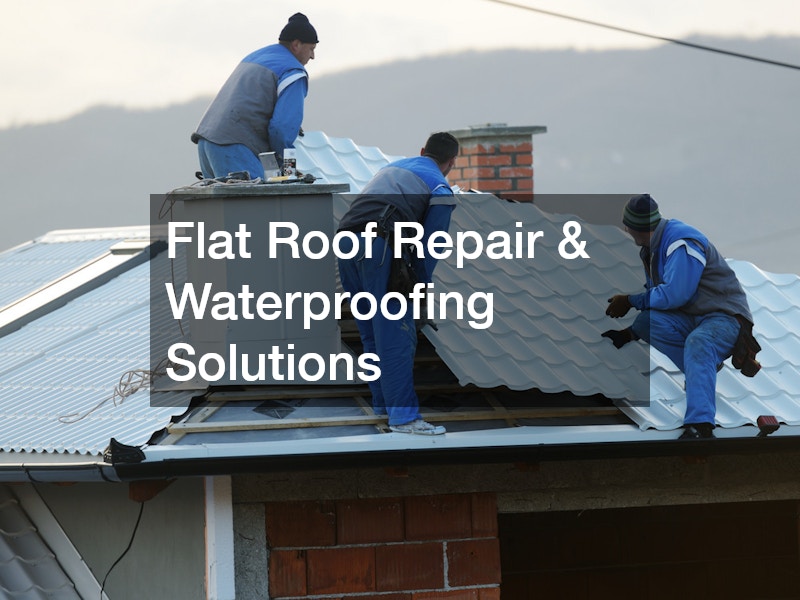Flat roofs, with their sleek and modern appeal, are a popular choice for both residential and commercial buildings. However, they come with their own set of challenges, particularly when it comes to repair and waterproofing. One key concern that property owners face with flat roofs is the potential for leaks, which calls for effective flat roof repair strategies. Understanding these solutions can prevent extensive damage, reduce repair costs, and prolong the lifespan of the roof.
Due to the unique structure of flat roofs, they are more prone to water accumulation compared to sloped roofs. This accumulation can lead to water seepage and leaks, making timely flat roof repair crucial. Furthermore, the materials used in flat roofing, such as bitumen and tar, can degrade over time due to environmental conditions. Therefore, regular maintenance and prompt roof repair are essential to maintaining the roof’s integrity.
In this article, we will delve into various flat roof repair and waterproofing solutions. We’ll explore different techniques, materials, and strategies that ensure flat roofs remain secure and durable. Our goal is to equip property owners with knowledge that can aid in effective flat roof upkeep, ultimately saving time and money. Let’s navigate the common issues and their respective solutions in the realm of flat roofing.
Common Flat Roof Problems
One prevalent issue with flat roofs is ponding water, which can exert stress on the roof surface. Ponding water, if left unattended, can lead to the degradation of roofing materials, making flat roof repair a necessity. This problem is exacerbated during heavy rainfall, where the lack of slope prevents efficient drainage. Regular inspections can help identify ponding early and facilitate timely intervention.
Blistering is another problem that flat roof owners may encounter, often caused by trapped moisture and air pockets. These blisters can expand and burst, leading to leaks and further roof damage, necessitating immediate roof repair. Environmental factors such as fluctuating temperatures can exacerbate blister formation. Regular maintenance and using proper materials during initial roof installation can mitigate this issue.
Thirdly, membrane cracks are a common issue due to the natural wear and tear of roofing materials. Cracks can lead to leaks and moisture infiltration, compromising the insulation and structure of the building. Addressing these cracks through effective flat roof repair ensures the roof remains waterproof and robust. Choosing high-quality, flexible roofing materials can prevent frequent cracking and extend the roof’s lifespan.
Flat Roof Repair Solutions
One effective flat roof repair solution is the application of a rubber or silicone sealing membrane. These materials provide a resilient barrier against water and are known for their long-lasting properties. Additionally, the seamless application of these membranes reduces potential leak points, enhancing waterproofing. For property owners looking to invest in sustainable roof maintenance, this method is a worthwhile consideration.
Another prevalent solution is the use of patch repair for minor cracks and leaks. This involves cleaning the affected area and applying a patch that seals and reinforces the damaged section. This cost-effective roof repair method is ideal for immediate fixes while preventing extensive water damage. It’s crucial to use patches compatible with the existing roof material to ensure effectiveness.
For comprehensive protection, installing a thermal insulation layer during flat roof repair can prove beneficial. Insulation not only provides additional waterproofing but also enhances the building’s energy efficiency. By keeping internal temperatures stable, this solution can reduce energy costs and improve occupant comfort. It’s a forward-thinking approach to repair that offers benefits beyond basic waterproofing.
Waterproofing Solutions for Flat Roofs
Waterproofing paints and coatings are a popular choice for ensuring flat roof resilience against water intrusion. These products create a protective layer that repels water, preventing seepage into the roof material. They are easy to apply and often come with UV protection, prolonging the surface’s durability. This simple roof repair technique enhances waterproofing without extensive renovation.
Liquid waterproofing membranes offer an advanced solution by forming a continuous, seamless surface. Such membranes can adapt to roof movements and expansions, reducing potential for cracks and leaks. This option is ideal for irregular surfaces where traditional membranes might struggle to fit. Incorporating this method into roof repair plans can significantly improve water resistance.
Finally, roofing felt systems remain a tried-and-tested option for waterproofing flat roofs. Modern felt systems are more robust, often reinforced with polyester and modified bitumen for enhanced durability. They provide a layered protection mechanism that effectively shields against water ingress. Choosing a high-quality felt system during roof repair can deliver long-lasting waterproof results.
Maintaining a flat roof requires understanding the potential challenges and implementing appropriate solutions. Effective roof repair is crucial in preserving the structural integrity and aesthetic appeal of a building. By selecting the right repair and waterproofing techniques, property owners can mitigate common issues such as leaks and ponding water. With regular maintenance and timely interventions, flat roofs can withstand the test of time and nature’s elements.
Investing in quality materials and expert installation can prevent frequent repair needs and ensure long-term efficiency. An informed approach to roof repair not only addresses current problems but also anticipates future needs. This proactive strategy empowers property owners, reducing long-term costs and enhancing the building’s overall value. As such, attention to detail in repair and waterproofing can yield significant benefits.
Comprehending the complexities of roof repair is vital for any building owner or manager. By arming oneself with knowledge, it’s possible to effectively tackle issues before they escalate. Regular inspections, combined with strategic repair and waterproofing measures, can safeguard against potential damage. Ultimately, proper care and investment today pave the way for a trouble-free future for flat roofs.


